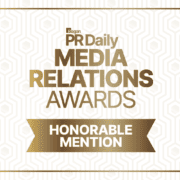
Google’s Latest Product Review Update Means for Consumer Products PR
Consumer Products PR, Consumer Tech PR, DTC, Lifestyle, Paid Media, PR Insights, product launch, SEO, TechnologyGoogle once again updated its Product Review Update for 2022. Google's Product Review Update and consumer PR are closely tied. Yet, for many CMOs and PR people, this update falls below the radar, but it has big implications for consumer products,…

3 Massive Cultural Trends for Emerging Brands
CMO, Consumer Products PR, Emerging Industries, Emerging Industries: Psychedelics, Lifestyle, PR Branding, PR Insights, product launch, Psybicilin, Purpose Driven, Social Impact, Technology[4 minute read time] Today's CMOs are constantly scanning the news and social networks for the latest trends and cultural shifts. For emerging brands, cultural trends and shifts couldn't be more important. But even the savviest of CMOs needs…

5 GenZ Insights CMOs Need to Know
CMO, Consumer Products PR, Lifestyle, PR Insights, Public Relations Services, Purpose Driven, Social Impact5 Must-Know GenZ Insights for CMOs and Marketers
[5 minute read]
GenZ vs. Millenials: What Marketers Need to Know
GenZ is coming and CMOs and marketers need insights now. After a decade of news about Millenials, here comes GenZ, they make…

What Google’s Latest Reviews Update Means for Consumer Products Digital PR
Consumer Products PR, Digital PR, PR Branding, PR Insights, Public Relations Services, Reputation Management, SEOWhat Google's Latest Product Reviews Update Means for Consumer Products Digital PR
[4 minute read time]
Product reviews are about to change and this will impact your digital PR and earned media, especially CPG or consumer product brands.…

PR for DTC Brands
Consumer Products PR, DTC, Hiring A PR Firm, Media Relations, product launch, Public Relations Services, ThoughtsPR for Direct-To-Consumer (DTC) Brands
[Reading Time: 5 minutes]
Direct-to-consumer (DTC) brands are increasingly growing in popularity. While the industry itself is hardly an emerging industry, many DTC products represent a disruption in…

Using Earned Media, Social Media, and PR to Maximize Brand Awareness
Consumer Products PR, Hiring A PR Firm, PR Branding, product launch, Public Relations Services, Social Media, ThoughtsPR and Social Media for Maximum Brand Awareness
Nothing beats when PR and social media for brand awareness. Used together strategically, they give your brand a competitive edge. With more avenues available to companies to reach their audiences,…




